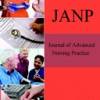Volume 11, Issue 2, 2024

Mcmed International
Journal of Advanced Nursing Practice
Issn
XXX-XXXX (Print),
XXXX-XXXX (Online)
Frequency
bi-annual
Email
editorjanp@mcmed.us












